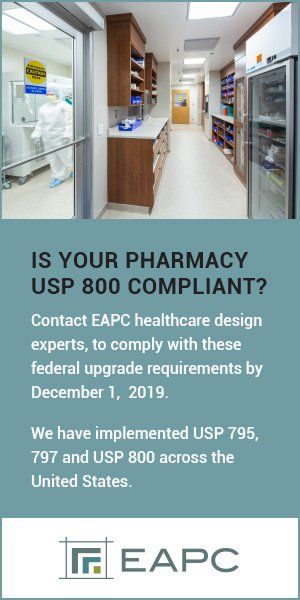ow more than ever, physician groups and other health care providers are looking for ways to work with private equity funds as an opportunity to grow their practice without selling it. Hospitals and national health care entities are acquiring physician practices at an extraordinary rate. But not all physicians want to sell to these organizations. Many physicians like owning their business and leading the changes occurring in health care.
cover story one
Private Equity in Health Care
A Growing Trend
By Randal Shultz, JD and Ben Peltier, JD
However, occasionally, outside financial resources are required to grow the practice. Fortunately, private equity can help physicians control their destiny and grow revenue through the “enterprise value” of their practice, in addition to earning technical and professional fees.
Our firm, Lathrop GPM, represents physicians, hospitals and private equity firms so we see the differing perspectives from all sides of these transactions. This article focuses on the physician perspective. What are the benefits to physicians of partnering with private equity as an alternative to hospital acquisition?.
The mechanics of a private equity transaction
Financial firms in the equity space have developed financing strategies to enable physicians to make money from both the practice of medicine and from the business of medicine. The common structure of these arrangements is discussed in more detail below, but typically the equity fund injects cash into the practice to compensate the individual physician-owners, and the practice then agrees to retain a management company connected to the private equity firm. In many states, including Minnesota, the Corporate Practice of Medicine Doctrine prohibits for-profit entities from employing practicing physicians, so the practice continues its operations under the same legal structure. In addition to the up-front payment, the parties will typically establish a new compensation formula for the physicians and often identify new ancillaries to enhance revenues.
The first question is why a private equity fund would buy a medical practice considering that there are no excess profits remaining after the payment of operating expenses and compensation to the providers. The answer is that private equity funds use the equity markets to create “enterprise value” for a medical practice. The equity fund promotes its ability to provide management expertise, savings through economies of scale, access to enhanced reimbursement rates through its managed care plans and a current (and future) liquidity event that will immediately place a large amount of cash in the physician’s pocket.
The value of many medical practices has been calculated at a multiple of 5-12 times available cash flow.
A fundamental driver of the strategy that separates the equity fund from hospitals is that the equity fund can pay more to a medical practice for assets and services than can a hospital or other health care provider. Equity funds cannot make patient referrals so the amount paid by a fund is not restricted by the Stark Law, anti-kickback laws, or other health care regulatory limits.
The financial strategy of the equity fund arrangement begins by paying the physicians an initial multiple of some factor (net cash flow or asset value for example) to acquire practice assets or equity. Then through the related management firm, it institutes corporate practices to make the physician group more profitable. Once the practice is more profitable, the equity fund will combine the practice assets with other assets and sell the combination to a larger equity fund. If the initial purchase is properly structured, the physician owners share in the proceeds of the sale of the combined group delivering a second cash payment at that time.
What is the equity fund financing strategy?
The stock of many corporations is traded on a variety of stock platforms and exchanges (both public and private) and the trading value of those shares is often calculated at a multiple of a financial factor such as, asset value, revenue, a financial ratio or earnings before interest taxes depreciation and amortization (EBITDA). Over the last few years, the value of many medical practices has been calculated at a multiple of 5-12 times available cash flow or EBITDA, with a multiple of 7-9 being most common. Practices at the higher end of the multiple range tend to be larger, benefiting from demographic growth, or in a practice area that is expected to expand.
The private equity fund’s strategy is to buy a medical practice’s cash flow or EBITDA at a base level multiple with the belief that if the fund can combine these attributes of multiple practices, the combined larger numbers will induce yet a higher multiple in the equity markets. Thus, the equity fund is often not looking to make its money on the daily operations of the medical practice but on this financing strategy. The equity fund is betting on the market’s ability to return large profits based upon selling the combined physician groups’ EBITDA at higher multiples than paid for the initial practice acquisitions. The strategy has been successful, and it is being used across the country for multiple types of physician groups.
How does it work technically?
The answer to this question depends upon the nature of the equity fund and how it designs its financial model. State limits on “corporate practice of medicine” also limit the equity fund’s options for the structure of the practice after acquisition. In states with limits on ownership of a medical practice, the most common approach is for the equity fund to form a management company, have that management company acquire the assets of the medical practice, employ the non-professional personnel of the medical practice and enter into a management contract with the medical practice to control the cash flow and administrative aspects of the practice.
Under this approach, the private equity fund will issue a Letter of Intent (LOI) to the medical practice describing the overall transaction structure. The LOI will indicate that in exchange for the assets of the medical practice and a “to be determined” amount of regular cash flow from the practice paid to the management company (usually in the form of management fees), the equity fund will pay the physicians a large upfront payment based on the multiple.
The lump sum paid to each physician is typically provided in the form of part cash and part equity in either the management company or another entity owned by the equity fund. Frequently, the physicians will have a choice regarding how to allocate the cash portion of the purchase price and the equity portion of the purchase price among the practice owners. Many transactions allow the physician owners to allocate the cash and equity according to the preferences of the individual owners, providing more flexibility for each physician to determine how they want their payout. This means that one physician in the group might want most of the purchase price in cash while another might want a greater portion of the purchase price in equity.
The next step is to negotiate an ongoing compensation formula for each physician. The physician’s historical salary will be reduced to generate the cash flow required to pay the “management fee” to the management company. Typically, the fee paid to the management company will exist for 5-8 years. If a physician terminates employment or fails to generate sufficient cash receipts to pay his or her share of the fee for each of those years, the equity fund will “claw back” part of the lump sum payment or collect the fee from the remaining physicians. This commitment term is another point subject to negotiation at the beginning of the relationship with the equity fund.
This type of transaction and practice structure is not without risk.
The equity fund will attempt to expand the revenues of the practice after the acquisition by increasing reimbursement rates, expanding ancillary/technical services and adding new physicians. The equity fund will want a portion of the incremental gain, but the physicians should also be entitled to a portion of the increase. Determining each party’s share of the gains is another important point of negotiation that should be determined up front. The expanded revenue is also crucial to the equity fund’s goal of re-selling the practice to a larger equity fund. That is why some physicians with a lesser need for current cash will take more equity than cash up front, betting on the upside value of the subsequent “roll up” equity sale.
How do the physicians function/exist in the ongoing practice?
For physicians with a relatively short remaining medical career, the equity fund approach can create a once in a lifetime liquidity event. The practice environment becomes almost irrelevant as the financial objectives are achieved and the longer view is less important. For the physician with a longer working timeline, the reviews are mixed. In the best situations, the physicians have no further business or regulatory responsibility, and see patients as they walk through the door. The physician relies upon the management company to assure everything is profitable and that the physician will always have a job. The equity fund has the incentive to increase every physician’s compensation so the physician can ignore the business side of the medical environment.
But this type of transaction and practice structure is not without risk. If the arrangement is not properly structured, some physicians feel oppressed and part of a corporate machine focused upon maximizing profits to the detriment of patient care. There may also be reduced ability to spend the time with a patient that the patient needs. Finally, joining a larger corporate structure may reduce physician autonomy and entrepreneurial spirit. The practice becomes a job instead of a profession. Most significantly, if the management company fails (as has happened frequently in the past), the physician’s practice may be forced to close requiring the physician to find a new practice setting. Physicians may also be subject to “clawbacks” of the original payments if practice liabilities are higher than originally expected. These may include regulatory non-compliance, billing errors and issues, or other unanticipated liabilities.
Conclusion
An equity fund/physician practice transaction can lead to many benefits for a practicing physician. Enhanced management expertise, savings through economies of scale and access to enhanced reimbursement rates can result in more financial resources for the practice of medicine and enhanced compensation for physicians. But the arrangements must be properly structured to protect the physician owners’ financial and practice interests. In considering such a transaction, it is important for physicians to work with legal experts with industry knowledge. Legal issues related to health care regulatory compliance, tax, ERISA, and securities law all must be fully considered when entering into such a deal.
Randal Schultz, JD, is a health care attorney at Lathrop GPM who counsels health care organizations of all types across the country for the development of business/financial structures, entity formation, program/product creation and regulatory compliance.
Ben Peltier, JD,
is a health care attorney at Lathrop GPM who focuses his practice on a wide range of transactional matters including contracting, mergers and acquisitions, regulatory guidance, governance and compliance.
MORE STORIES IN THIS ISSUE














